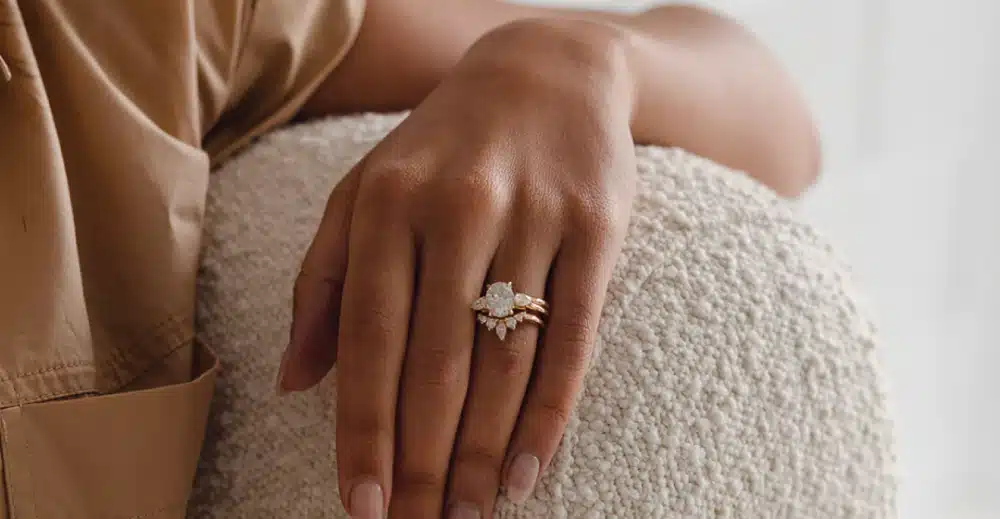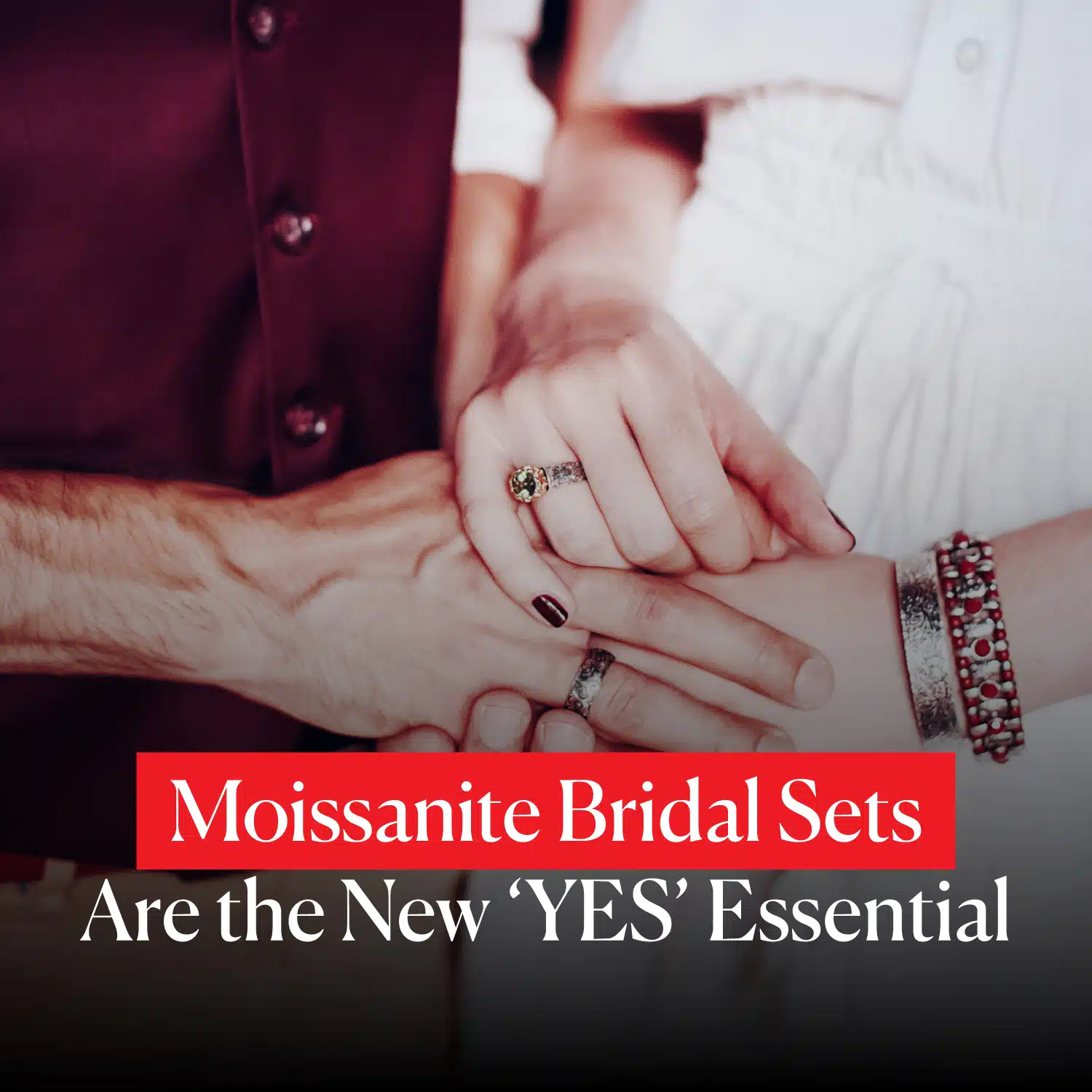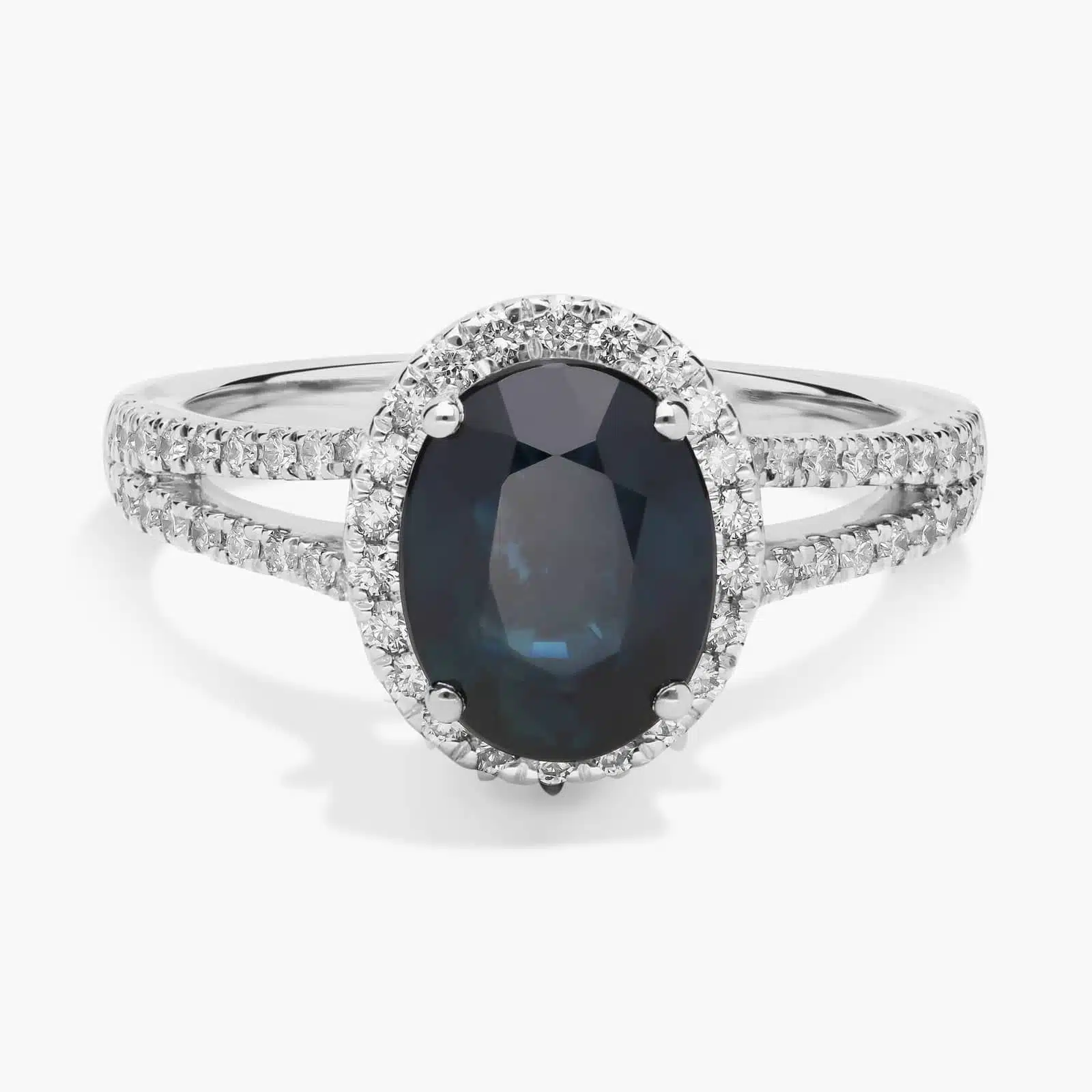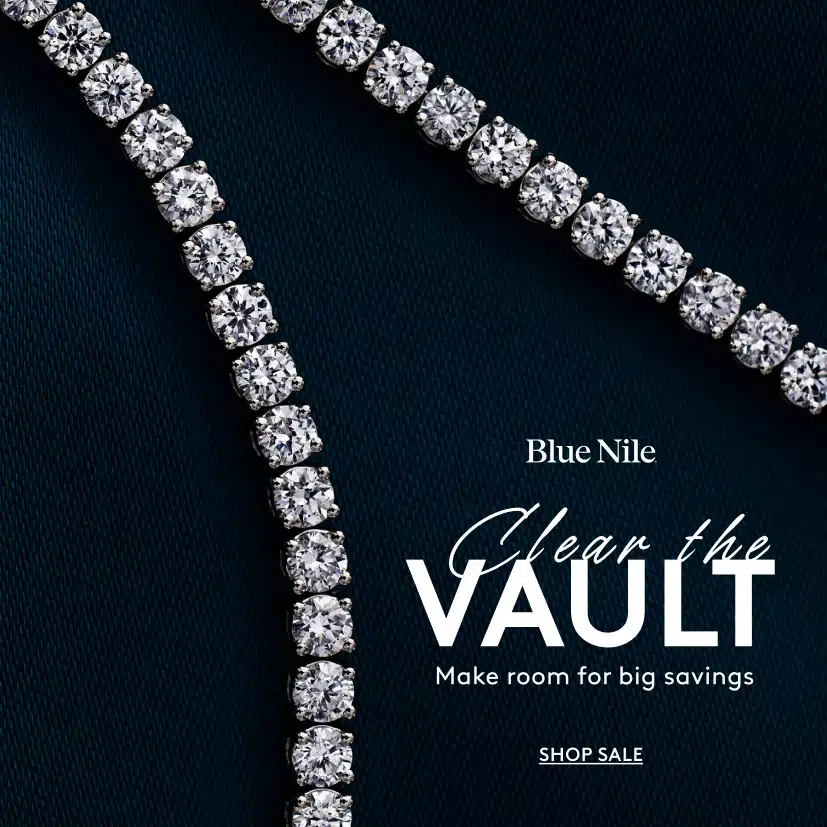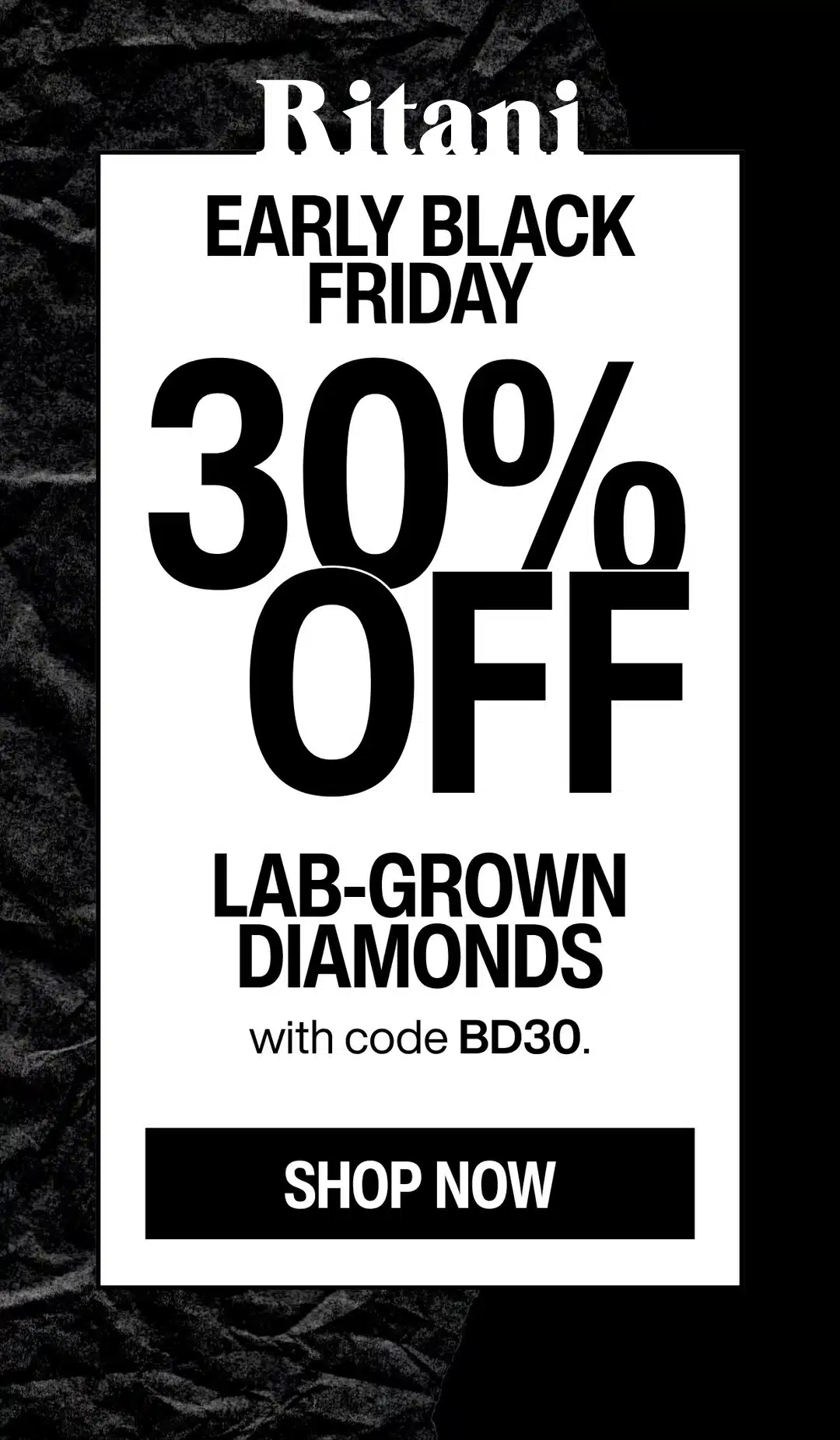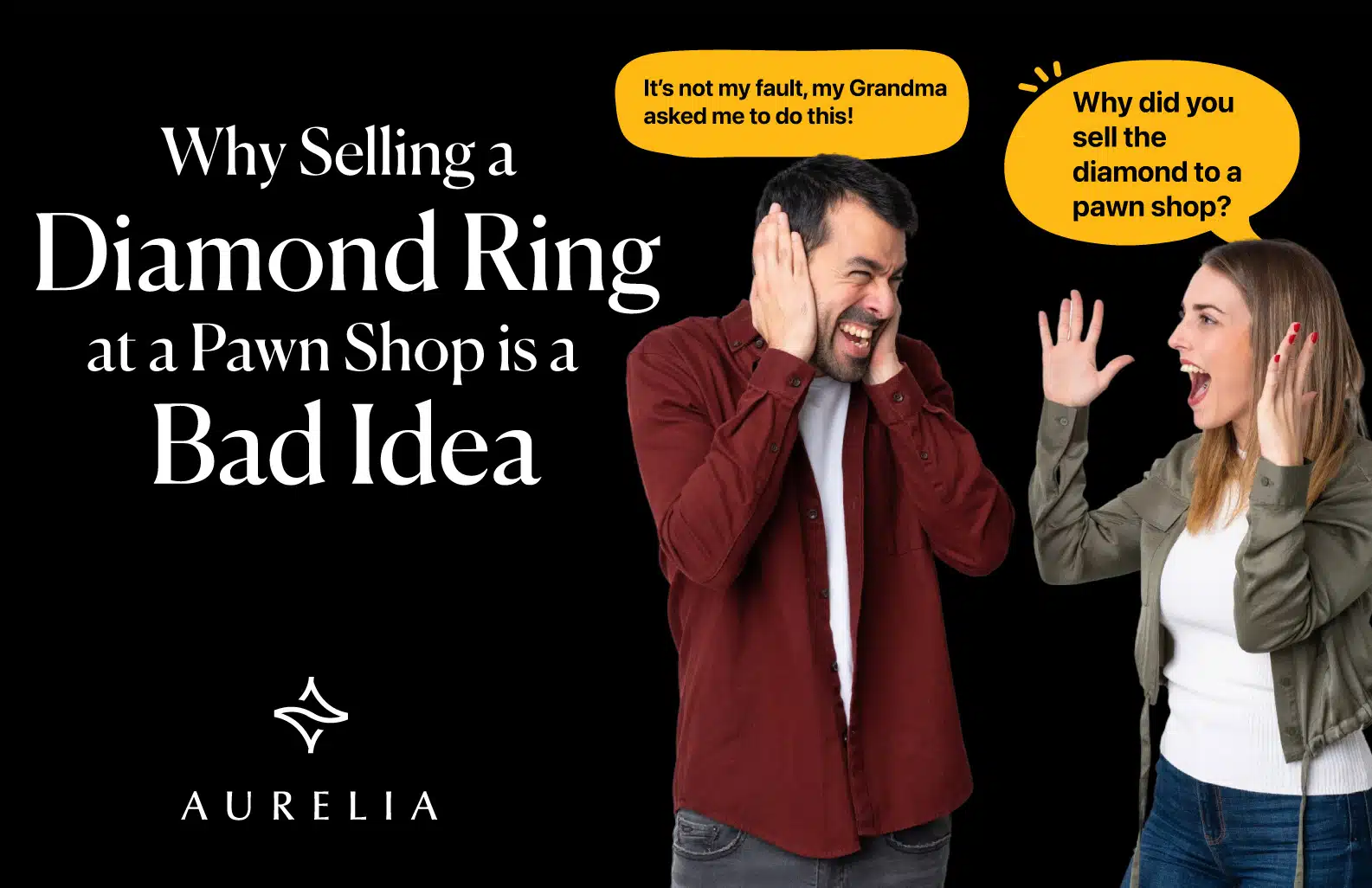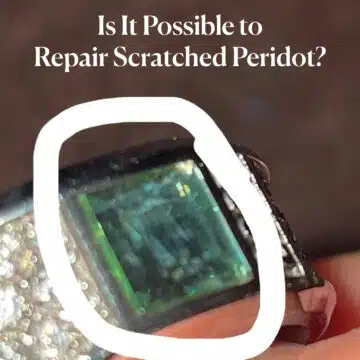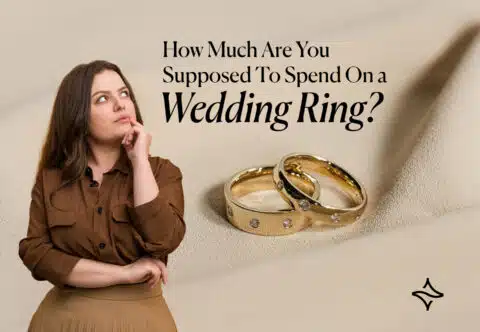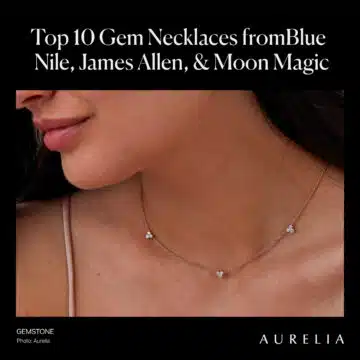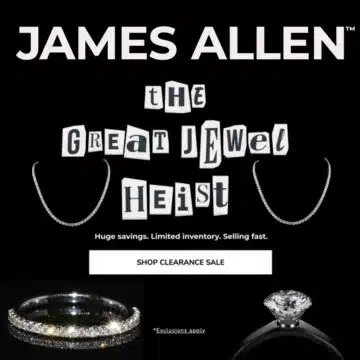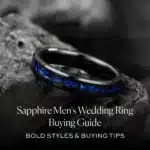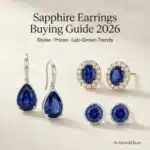Let’s be honest. There are a hundred different reasons you might be looking up where to sell a diamond ring, and almost none of them are easy.
Maybe it’s a pawn shop engagement ring from a relationship that’s ended. Maybe you’re going through a tough financial time and need cash, fast. Whatever your reason, I know this isn’t a simple process, and my job is to make sure you don’t make a costly mistake when you’re already in a vulnerable position.
So let’s get straight to it and answer the question in the title: Why selling a diamond ring at a pawn shop is a bad idea. The truth is, it’s a resounding yes—it is a bad idea. In fact, it is almost always the worst financial decision you can make. From my time in this industry, I can tell you that a diamond pawn shop should be your absolute last resort, not your first stop.
In this guide, I’m not just going to tell you not to do it. I’m going to pull back the curtain and show you why their entire business model is designed to give you the lowest possible price. We’ll look at the real, hard numbers you can expect.
And most importantly, I’ll walk you through the much, much better alternatives that will put significantly more cash in your pocket.
- How Pawn Shops Really Work (And Why It’s a Bad Deal for You)
- The Math: A Painful Look at What a Pawn Shop Really Offers
- Diamond Resale Price Calculator
- Three Much Smarter Alternatives to a Pawn Shop
- Myth Busting: Common Lies You'll Hear at a Pawn Shop
- The Bottom Line on Selling Your Ring
- Frequently Asked Questions About Selling Jewelry
Diamond IQ Test: Natural or Lab-Grown?
Two identical diamonds: GIA Certified, 1.51ct, D Color, VVS1, Ideal Cut. One is natural ($16,530), the other is lab-grown ($2,390). Choose the diamond you like better and see if you can match it to its origin.
How Pawn Shops Really Work (And Why It’s a Bad Deal for You)
Before you even walk through the door of a pawn shop, you need to understand the business model. From my years in the industry, I can tell you it’s a model that is fundamentally tilted against the seller, especially when it comes to high-value items like diamond rings.
Their entire business is built on acquiring items for the absolute lowest price possible in order to make a significant profit.
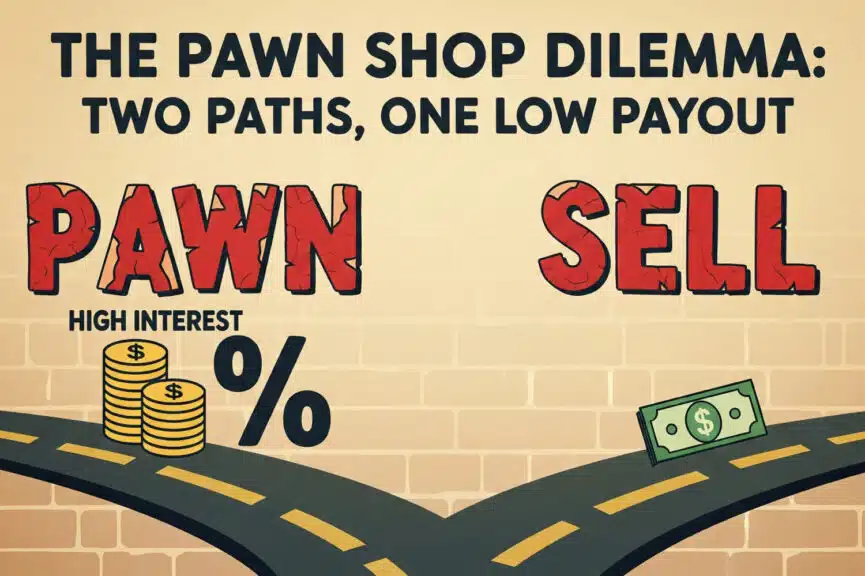
The Pawn vs. The Sale: Two Paths to a Low Payout
When you bring your ring to a pawnbroker, you generally have two choices, and both are designed to benefit the shop owner, not you.
Option 1: Pawning Your Jewelry
This is the classic pawn model. You are not actually selling your ring; you are getting a short-term loan and leaving your ring as collateral. Here’s the catch:
- The Loan is Tiny: The loan you’re offered will be a very small fraction of the ring’s actual worth, typically 25% to 50% of its secondhand market value. This protects the pawnbroker in case you don’t return.
- The Interest is Huge: This is where they really make their money. Pawn shop loans are notorious for their incredibly high interest rates and fees. It’s not uncommon for the annual percentage rate (APR) to be over 100%, and sometimes much higher.
- The Clock is Ticking: These are not long-term loans. You often have just one to three months to pay it back, plus all the interest, or they keep your ring.
This path of pawning jewelry is a high-cost, high-risk way to get a very small amount of cash.
Option 2: Selling Your Jewelry to the Pawn Shop
This is the more straightforward option, but it’s just as bad financially. When you’re selling jewelry at a pawn shop outright, the pawnbroker is a professional buyer whose only goal is to maximize their profit.
Their pawn shop valuation has to be low enough to cover their rent, salaries, and security, and still leave a massive margin for profit when they sell it to a customer who is also expecting a deep discount. To make all that math work, the initial price they offer you has to be rock-bottom.
The Expertise Gap: A Jeweler vs. a Generalist
This is the most critical point that most people miss.
When you walk into a reputable jewelry store, the person you speak to is often a GIA-trained gemologist. They are a diamond expert. When you walk into a diamond pawn shop, the person behind the counter is a generalist. They might be great at valuing a vintage guitar, a PlayStation, or a power tool, but they are almost never a gemologist.
They don’t know how to properly grade the 4 Cs of your diamond. They can’t accurately assess its cut quality, its specific color grade, or the nuances of its clarity. So how do they protect themselves from making a costly mistake on their end?
By offering you a price so low that it covers any and all potential risk.
They’re not paying for a G-color, VS2-clarity diamond. They are paying for a “one-carat diamond ring,” and they are building in a huge margin of error in their favor. This lack of expertise is a primary reason the pawn value of jewelry is always so much lower than its true market value.
The Math: A Painful Look at What a Pawn Shop Really Offers
Theory is one thing, but let’s put some real, hard numbers to this. I want to show you the painful reality of the diamond resale market and exactly where a pawn shop fits into that picture.
To do this, I’m going to create a very common scenario with a beautiful, high-quality engagement ring.
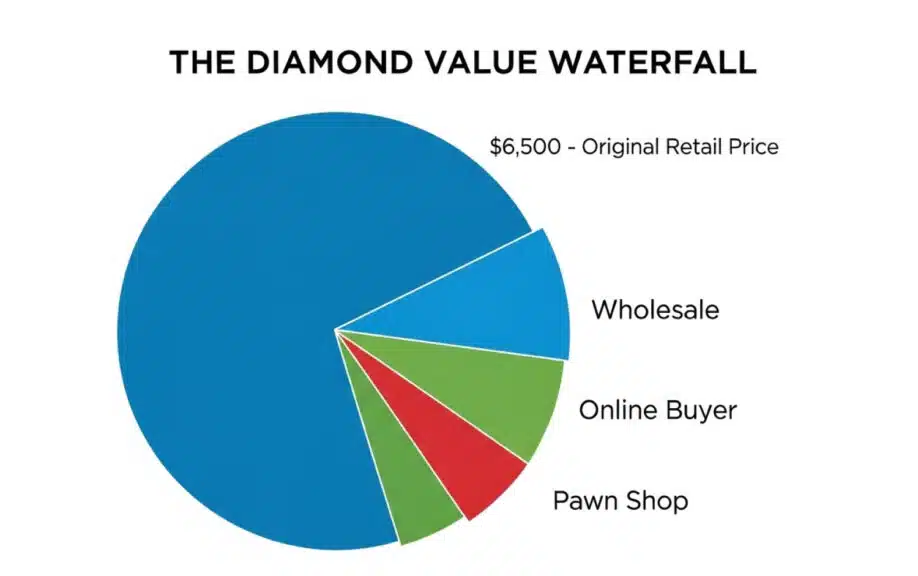
Let’s imagine you are selling a diamond engagement ring with these very desirable specs: a 1-carat, G-color, VS2-clarity diamond on a simple 14k white gold solitaire band.
Step 1: The Original Retail Price: $6,500
This is what you or your partner likely paid at a reputable jewelry store. It’s a fair price that includes the cost of the diamond, the setting, and the jeweler’s markup to cover their own expertise, rent, and other business costs. You walked away with a beautiful, certified ring and the jeweler made a reasonable profit.
Step 2: The Original Wholesale Cost: ~$4,500
Before it was sold to you, that jeweler bought the loose diamond and the setting from their suppliers. The wholesale cost for these components was likely around $4,500. This is the true “market cost” of a new diamond at the dealer level.
Step 3: The Harsh Resale Reality (The Number That Matters)
Here is the painful truth that every person selling a diamond must understand: you will never get the original wholesale price back.
Why? Think about it from a dealer’s perspective. Why would a professional jeweler buy your used, pre-owned ring for $4,500 when they can call their supplier and get a brand new one for the exact same price? They have no financial incentive to do so.
To make a profit, any dealer must buy your used ring for a price that is significantly below the current wholesale cost.
The actual cash value of your ring to a professional buyer is likely somewhere in the $2,500 – $3,500 range. Now, where you sell it determines how much of that amount you actually get.
Before we get to the pawn shop, I want you to see this for yourself. I built a dedicated Diamond Resale Value Calculator that breaks this down in more detail. I highly recommend you open this in a new tab and plug in your own diamond’s numbers to get a realistic starting point.
Step 4: The Pawn Shop Offer: ~$1,000 – $1,500
Now, let’s walk into the pawn shop with our ring that has a real-world resale value of around $3,000.
The pawnbroker, who is not a diamond expert, knows they need to sell this ring in their shop for a deep discount to attract their customers—let’s say they price it at $2,500. After factoring in their rent, security, employee salaries, and the fact that the ring might sit for months, they need to ensure a massive profit margin.
To make all that math work, they will likely offer you $1,000 to $1,500 for your ring.
Let that sink in. You would be getting less than 25% of what you originally paid, and only about a third of its actual secondhand market value. This isn’t because they are trying to be cruel; it’s simply their business model. And it’s a business model that is a terrible, terrible deal for you.
Try the Math Yourself
To make this even clearer, I’ve embedded the value estimator tool below. This tool focuses on the secondhand market value (Step 3). The final pawn shop offer would be a small fraction of the number you see here.
Three Much Smarter Alternatives to a Pawn Shop
So, we’ve established that a pawn shop is the worst place to sell your diamond ring. That’s the bad news. The good news is that you have several much, much better options that will put significantly more cash in your pocket.
Let’s walk through the three smartest routes you can take, from the fastest and safest to the most hands-on.
The Best Option: Specialized Online Diamond Buyers
My Take: For over 90% of people, this is the single best, safest, and most profitable way to sell diamond rings for cash. Companies like Abe Mor are not pawnbrokers; they are diamond industry experts. Their entire business is buying pre-owned diamonds, and they operate within the professional wholesale market.
Here’s why this is a superior option:
- They Are Experts: They are GIA-trained gemologists who know exactly what your diamond is worth. They will professionally grade it and understand its true market value based on the 4 Cs, not just a wild guess.
- They Have a Global Network: Unlike a local pawn shop for rings, they aren’t just reselling to a small local market. They have a global network of dealers and jewelers to sell to, which means they can afford to pay you a much higher, fairer price.
- It’s Safe and Fast: The process is secure and transparent. You send them your ring via fully insured mail, they evaluate it, and they make you a professional cash offer. The entire process can often be completed in just a few days.
From my experience and extensive secret shopping, you can expect to receive an offer from a specialist like Abe Mor that is 2 to 3 times higher than what any pawn shop that buys jewelry would ever offer you. This is, without a doubt, my top recommendation.
The “Slow-Burn” Option: Selling it Yourself
My Take: If you have more time than you have urgency, and you’re comfortable with a bit of legwork, selling the ring privately is the path that has the potential to get you the highest price. This involves listing your ring on a dedicated secondary market platform like LoupeTroop.
But—and this is a big but—it comes with a unique set of challenges:
- You Need Documentation: To be successful, you absolutely must have the original GIA or AGS certificate for your diamond. Buyers on these sites are very knowledgeable and will not consider a diamond without it.
- It Takes Work: You’ll need to take high-quality photographs, write a compelling and honest listing, and be prepared to answer a lot of questions.
- It’s a Waiting Game: It can take weeks, or even many months, to find a serious buyer. You will also have to deal with a lot of lowball offers and navigate the risks of a private transaction, including secure payment and insured shipping.
This is the “for sale by owner” route. It can be rewarding if you have the patience for it, but it’s not the right choice if you need cash quickly.
The “Upgrade” Option: A Clever Last Resort for a New Diamond
My Take: This is a fantastic and often completely overlooked strategy, but it only applies if you want to get a new diamond, not just cash out. Both Blue Nile and James Allen offer their customers a Lifetime Diamond Upgrade Program.
Here’s how it works: If you originally purchased your loose diamond from them, you can “sell” it back to them at any time and receive 100% of the original purchase price as a credit towards a new diamond that is at least twice the value.
For example, if you paid $5,000 for your James Allen diamond, you can send it back five years later and get a $5,000 credit towards a new $10,000 diamond.
This is an absolutely amazing deal. It’s a way to “sell your diamond ring” without losing a single penny of what you paid for the main stone. If you know your original ring came from one of these major retailers and you’re looking to upgrade, this is the first place you should look. It is, by far, the best financial outcome you can get.
Myth Busting: Common Lies You’ll Hear at a Pawn Shop
Alright, this is important. A pawnbroker is a professional negotiator. It’s what they do, all day, every day. Their job is to buy low, and they often use specific psychological tactics and half-truths to convince you to accept a lowball offer.
From my time in and around this business, I’ve heard them all. I want to arm you against the four most common lines you’re likely to hear, so you can recognize them for what they are: negotiation tactics.
- The Lie: “Oh, I see a big flaw right here. That really hurts the value.”
- The Reality: The pawnbroker points to a tiny speck they saw under a loupe. To an untrained eye, this can sound terrifying. But the truth is, this is likely a minor inclusion that a professional GIA gemologist would have graded as a completely normal VS2 or SI1.
It’s an internal “birthmark” that has very little impact on the diamond’s beauty or real-world market value. They are turning a minor characteristic into a major-sounding flaw to justify a lower price.
- The Reality: The pawnbroker points to a tiny speck they saw under a loupe. To an untrained eye, this can sound terrifying. But the truth is, this is likely a minor inclusion that a professional GIA gemologist would have graded as a completely normal VS2 or SI1.
- The Lie: “There’s just no market for these kinds of rings right now.”
- The Reality: This is almost always false. A classic, 1-carat diamond engagement ring is one of the most consistently sought-after pieces of jewelry on the planet. The global market for these rings is massive and always active.
By claiming there’s “no market,” they create a false sense of scarcity, making you feel like they’re the only buyer in town and that you should take whatever they’re offering.
- The Reality: This is almost always false. A classic, 1-carat diamond engagement ring is one of the most consistently sought-after pieces of jewelry on the planet. The global market for these rings is massive and always active.
- The Lie: “This brand/style isn’t popular anymore.”
- The Reality: This is a classic misdirection. While the style of the ring’s setting (the metal band) might be more or less trendy, it has very little to do with the primary value of your ring. The vast majority of the value—often 80-90% of it—is in the center diamond and the precious metal.
These components have an intrinsic, global market value that is completely independent of the setting’s brand name. They are devaluing the whole package by focusing on the least valuable part of it.
- The Reality: This is a classic misdirection. While the style of the ring’s setting (the metal band) might be more or less trendy, it has very little to do with the primary value of your ring. The vast majority of the value—often 80-90% of it—is in the center diamond and the precious metal.
- The Lie: “This is a tough sell for me. It’s going to sit on my shelf for a year.”
- The Reality: A fairly priced diamond ring is one of a pawn shop’s most desirable and fastest-moving items. There is a huge demand for pawn shop engagement rings from buyers looking for a deal.
The pawnbroker knows that if they can acquire your ring for a low enough price, they can sell it quickly for a significant profit. They are simply creating an illusion of risk on their part to make their low offer seem more reasonable to you.
- The Reality: A fairly priced diamond ring is one of a pawn shop’s most desirable and fastest-moving items. There is a huge demand for pawn shop engagement rings from buyers looking for a deal.
When you know these tactics, you can see them for what they are. You’re no longer an emotional seller; you are an informed one.
The Bottom Line on Selling Your Ring
In the end, it all comes down to this: when you are selling a diamond ring, knowledge is your only defense.
The business model of a pawn shop is built to leverage your urgency against you, and it is a system that will never, ever result in you getting a fair price for your jewelry. They are counting on the fact that you need cash, and you need it now.
But now, you are no longer an uninformed seller. You know how their model works. You’ve seen the real-world math and how a pawn shop diamond ring’s price is a fraction of its true value. Most importantly, you know that you have much, much better alternatives.
By understanding your options—from the speed and expertise of professional online buyers to the potential of a private sale or an upgrade program—you can approach this difficult process with confidence. You now have the tools to get the best possible value for your precious item.
Don’t let a moment of desperation cost you thousands of dollars. Take a deep breath, use what you’ve learned here, and make the smart choice. You’re in control.
Frequently Asked Questions About Selling Jewelry
I know you still have questions. This is a confusing process, and it’s easy to feel overwhelmed. Let’s tackle some of the most common and important questions I get asked all the time.
Blue Nile is one of the biggest and most recognized online jewelry retailers, offering an extensive and exclusive inventory. Their high-resolution images are improving and getting closer to the quality offered by James Allen, while their prices remain highly competitive. Right now, Blue Nile offers up to 30% savings on jewelry during a limited-time sale.
WHAT WE LOVE ABOUT THEM:
- 30-day no-questions-asked return policy, with a prepaid shipping label provided by Blue Nile.
- Lifetime warranty on all purchases.
- Free shipping on every order.
- Complimentary services every six months, including prong tightening, repolishing, rhodium plating, and cleaning.
- Insurance appraisal included with your purchase.
- One free resizing within the first year.
- High-quality images available for roughly half of their diamond selection.
- 24/7 customer service support.
- Full credit toward future upgrades, as long as the new item is at least double the value.
- Best-in-class order fulfillment process.
James Allen is a top leader in online diamond sales, offering cutting-edge imaging technology that lets you inspect diamonds as if you were using a jeweler's loupe. With the largest exclusive selection of loose diamonds available online and excellent pricing, they also boast one of the finest collections of lab-created diamonds on the market. They currently run a 25% discount on selected lab-grown diamonds!
WHAT WE LOVE ABOUT THEM:
- 30-day no-questions-asked return policy, with a prepaid shipping label provided by James Allen.
- Lifetime warranty on all purchases.
- Free international shipping.
- Complimentary prong tightening, repolishing, rhodium plating, and cleaning every six months.
- Insurance appraisals included with purchases.
- One free resizing within 60 days of purchase.
- Free ring inscriptions available.
- Best-in-class high-quality imagery for every diamond in stock.
- 24/7 customer support.
- Premium, best-in-class packaging.


